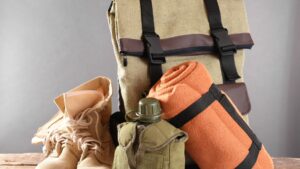Sending your child to summer camp for the first time can feel overwhelming, especially when it comes to ensuring they have everything they need to feel comfortable and confident while away from home. What should I pack for my child’s first overnight summer camp experience?
The essential packing list includes bedding, weather-appropriate clothing, toiletries, medications, swimwear, towels, a flashlight, bug spray, sunscreen, and a few comfort items from home. Most camps provide a detailed packing list specific to their programs and duration.
While this covers the basics, several crucial considerations can make or break your child’s camp experience, from specific quantity recommendations for clothing items to commonly forgotten essentials that most first-time camp parents don’t think about. Keep reading to ensure you don’t miss any of these important details that could impact your child’s comfort and enjoyment at camp.
How Many Of Each Clothing Item Should I Pack For Summer Camp?
A good rule of thumb is to pack enough clothes for 1.5 times the number of days your child will be at camp. For a typical one-week session, pack 10-12 sets of underwear and socks, 8-10 t-shirts, 6-7 pairs of shorts, 2 pairs of long pants, 2 sweatshirts or jackets, and 2 pairs of pajamas. This allows for unexpected clothing changes due to weather, activities, or accidents.
Don’t forget to include activity-specific clothing like swimsuits (2-3), water shoes, and closed-toe shoes for hiking or sports. Many camps do laundry only for extended stays, so packing extra is essential for shorter sessions.
What Are The Most Commonly Forgotten Items That Are Actually Essential?
While most parents remember the obvious items, there are several crucial things that often get overlooked. A laundry bag is essential – without one, dirty clothes end up mixed with clean ones or lost. A water bottle with a strap, extra shoe laces, and a rain poncho are frequently forgotten but incredibly useful.
Some other commonly missed items include: shower caddy for toiletries, flip flops for shower use, letter-writing supplies with pre-addressed envelopes, and a small battery-operated fan for hot nights. These items can significantly impact your child’s comfort and ability to stay organized at camp.
What Items Should Absolutely Stay Home?
Most overnight camps typically prohibit electronics like phones, tablets, and gaming devices. These items distract from the camp experience and can get lost or damaged. Expensive jewelry, sentimental items, and large amounts of cash should remain at home.

Food and snacks should generally not be packed unless specifically allowed by the camp, as they can attract wildlife and create issues with storage and hygiene. Additionally, anything that could be considered a weapon or dangerous item, including pocket knives (unless permitted explicitly for outdoor programs), should stay home.
How Should I Label My Child’s Belongings For Camp?
Labeling everything – from socks to water bottles – is crucial for preventing loss and confusion at camp. Use waterproof labels or permanent markers to write your child’s full name (not just initials) on all items, including the inside of shoes and clothing tags. Consider using iron-on or stick-on labels for items that can’t be written on directly.
Create a detailed inventory list and pack it on top of the luggage. This helps your child keep track of their belongings and makes it easier to check that everything returns home. Taking photos of expensive items with their labels can also be helpful if something goes missing.
How Should I Pack Everything So It’s Easy For My Child To Manage At Camp?
Organization is key when packing for camp. Use zip-lock bags or packing cubes to separate different types of clothing – one for socks and underwear, another for swimwear, etc. This system makes it easier for children to find what they need and keeps clean clothes organized throughout their stay.
Pack daily outfits together in gallon-sized zip-lock bags, labeling each with the day of the week. This is especially helpful for younger campers who might struggle with choosing appropriate clothing combinations. Place toiletries in a waterproof bag or container to prevent leaks, and pack it near the top of the luggage for easy access on the first day. Consider using a sturdy trunk or footlocker rather than a duffel bag, as these are easier to keep organized and protect belongings better.Time To Start Packing!
Now that you have a comprehensive understanding of what to pack for summer camp, the best next step is to request the specific packing list from your child’s camp at least three weeks before the start date. This will give you enough time to compare their requirements with this general guide, make any necessary purchases, and properly label everything without feeling rushed.



